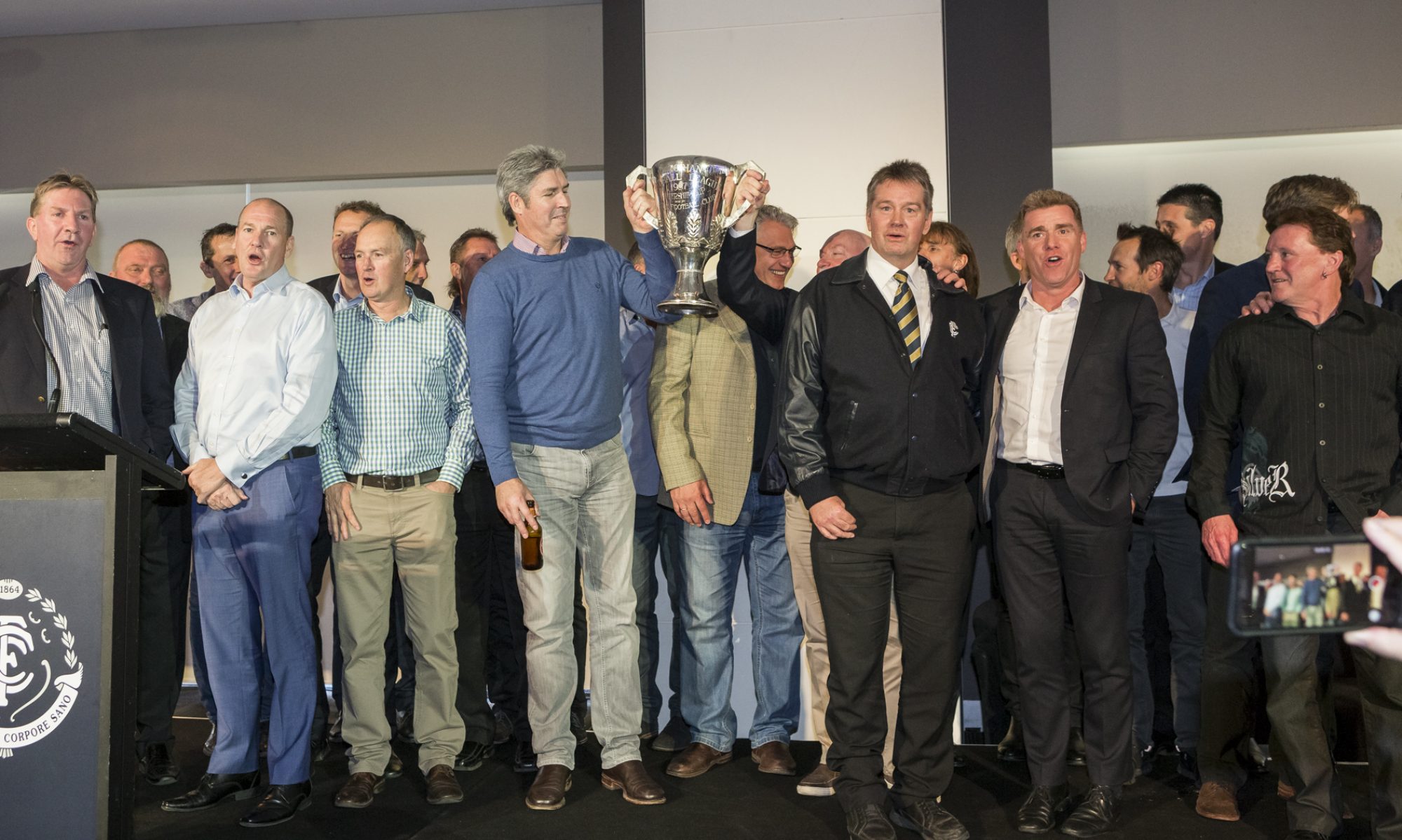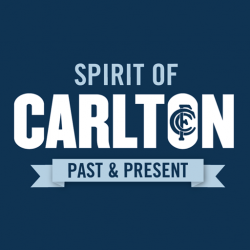John Chick, the talented former Carlton wingman of the 1950s, has died peacefully in his native Tasmania at the age of 80 after bravely battling Alzheimer’s disease.
The oldest of six children, each of whom survive him, Chick first came to the attention of Carlton recruiting officers when he turned on a clinic for New Town (later Glenorchy) in its 1951 TANFL Grand Final demolition of North Hobart.
“It was a chance thing,” Chick’s daughter Sue Saunders said this week. “Somebody from Carlton came to Newtown to look at another player, but saw Dad and picked him up.
“He was always the sporting type, and as a young boy he was a very good tennis player. I’m pretty sure that when he came to Carlton he also played cricket for them and when he was told he had to give it up for football he was quite disappointed.”
Wearing the No.23 made famous by Bert Deacon and now worn by Lachie Henderson, Chick was 19 when he completed his senior debut for the Blues in the opening round of 1952 against North Melbourne at Arden Street. Twice finding the big sticks from half-forward, Chick contributed handsomely to the team’s creditable 23-point victory over the “Shinboners” that day, in what was the first of 119 matches over nine seasons in Carlton teams coached by Perc Bentley, Jim Francis and Ken Hands.
Chick’s on-field showings, marked for their durability and consistency throughout the 1950s, were duly acknowledged. He finished in the top five placegetters for the Robert Reynolds Trophy (now the John Nicholls Medal) in four consecutive seasons from 1954 and in 1956 was recognised with All-Australian honors after featuring prominently for Victoria through the ANFC Championship in Perth.
In the 17th round of 1957, against Fitzroy at Princes Park, Chick was reported for an incident involving the Lions’ Wally Clark. A subsequent eight-match suspension would rob him of a place in Carlton’s first finals appearance in five seasons, but he would be there when the Blues met Melbourne and Essendon in the ’59 first semi and preliminary finals respectively.
That year, 1959, Chick was named vice-captain in succession to Laurie Kerr. According to the club’s ’59 Annual Report, Chick “fully justified the committee’s action with many valuable games on the wing, distinguished by good kicking, clever ball handling and elusiveness on the move”.
“Dad loved his years at Carlton,” Sue said. “We tended to get the party stories because Carlton was very social back then and he liked a beer – but then they all did.
“We were all Carlton members and he would often take the family over to Melbourne to watch the team play. He followed Carlton all the way through, and he was there with John James and John Nicholls for the last game at Princes Park.”
Nicholls, generally regarded as Carlton’s greatest ever footballer, caught the tail-end of Chick’s on-field career.
“I played with John for two or three years and my brother Don was good friends with him. There was ‘Chicky’ on one wing and Graham Gilchrist on the other,” Nicholls said.
“He wasn’t nuggety, but he had thick, strong upper legs which did cause him a bit of trouble with hamstrings. In saying that he was a good footballer who earned All-Australian selection and he was a lovely bloke.”
Gilchrist concurred with Nicholls’ assessment of Chick the footballer.
“The only time I really spent with John Chick was out on the ground because he wasn’t a really outgoing bloke, but he was a very good player, a good thinker and he was very close to his family,” Gilchrist said.
“He played on one side of the wing and me on the other, which is bloody ridiculous when you think about it now because nobody moved around much and you tended to stay in your set positions.”
In 1961, Chick returned to Tasmania to accept the role of captain-coach of New Town (by then renamed Glenorchy) and led the Tasmanian Magpies from last to a Grand Final in his first year. According to his daughter, “we were always assured that what happened at Glenorchy was due to his astute guidance”.
Chick later coached Huonville in the Tasmanian country league, before accepting the role of Assistant Coach to Ray Giblett at Sandy Bay and later to Ian Bremner at North Hobart. He assumed senior coaching duties from Bremner for two seasons from 1979 before relinquishing the position to John Devine, and he even dabbled in athletics as coach.
“Football was very much a part of Dad’s life,” Sue said, “but he always moved on”.
“He was very private, but he was also very competitive . . . and he never lived in the past.”
Chick, who died last Sunday night, is survived by his wife of 61 years Margaret, daughters Sue and Gaylee, son Darren and grandchildren Sam, Ned, Georgina and Megan.
His funeral will be held in Hobart on Thursday, with the Carlton players to wear black armbands into Thursday week’s opening round match with Richmond at the MCG as a mark of respect.





